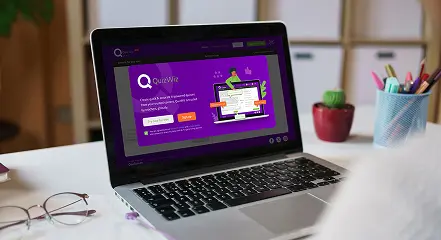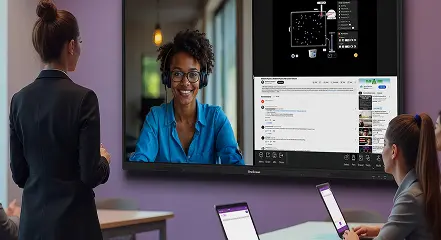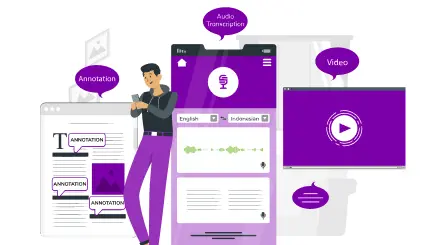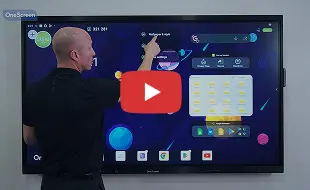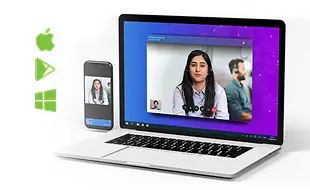
Classroom technology is advancing at a phenomenal pace. According to e-student.org, digital learning is the fastest growing segment in education, experiencing 900% growth since 2000. Ed Tech Magazine in Feb. 2019 reported that 72% of classrooms use either desktop or laptop computers. This study also revealed that 48% of students rely on desktops and 64% use a smartphone to complete homework. Additionally, the study showed that 33% of students utilize interactive white boards for learning and 20% rely on tablets.
A 2019 Gallup/NewSchools joint venture study revealed amazing stats on ed tech in the classroom. The findings are based on a survey of 2,696 public school students (3rd-12th grade): Teachers, Administrators, and Principals were included. The overall data trend in this study revealed that digital tools are vital to learning “in and outside” of the classroom.
The Gallup/NewSchools study also showed that 7 in 10 students claim to use e-tools several days a week for homework, and 65% of Teachers reported that tech tools were present in the classroom daily. The study further revealed that 81% of Teachers and 92% of Administrators admitted to understanding the value of digital tools in the classroom. Additionally, the joint study also showed that 70% of students believe that digital tools foster and ignite independent learning and 40% of students have the desire to regularly use e-tools within the learning process.
Listed below are the Top 10 statistics on how schools best use technology:
- Widening the learning bridge outside of the classroom. Distance learning is in demand more than ever because of the pandemic, and independent learning and special needs often require it. E-Student.org (1/7/2021) reported that 48% of K-12 students have direct access to on-line classes. The same study also revealed that 20% of the student population among ten of the largest education orgs worldwide participate in on-line courses. Furthermore, Tech.co News reported in 2019 that 52% of HS students take advantage of on-line testing. Additionally, 7 in 10 Educators support the notion that e-tools guide and motivate student outside of the classroom. (research.com 7/23/20).
- Increases Teacher productivity. 71% of school leaders believe that tech tools increase Teacher productivity. (EdTech Review, Digital Leadership Divide-2004). Various Cloud Service products, such as, Drop Box, Google Drive and Evernote help Teachers stay organized. OneScreen Solutions offers the ZUNI Learning product that allows Teachers to quickly access lessons and resources with quick screen taps. The extensive ZUNI database includes over 8,000 educational resources, 5,000 games, and 28,000 lessons. This highly efficient feature presents limitless learning opportunities and is a massive time saving tool for Teachers.
- Boosts student confidence: Helps students to visualize and monitor progress. Visualization is essential for most while learning. 70% of the population are visual learners. (www.goactablog.org/technology-as-the-motivational-tool-in-the-classroom.) When students can access lessons, directions, and educator feedback, it builds confidence and fosters engagement. The benefits of digital learning compared to traditional methods are plentiful. When students have direct access to learning tools, educational Apps, lessons, and Teacher input, they become self-directed, and in return, this increases efficiency and productivity for the student and the Teacher. “Real time” feedback is vital to the learning process. Digital tools also improve critical thinking skills and allow students to acquire new knowledge from a wide array of resources which boosts confidence and efficiency. (PanWorld Education, Benefits of Digital Learning over Traditional Education Methods, 3/23/2017).
- Increases retention rates. Digital tools open the door wider for quicker learning and increased retention. In fact, technology in the classroom can increase subject matter absorption rates to five times more per hour; a 25-60% higher rate than traditional learning methods. (research.com, 7/23/2020, Article: 66 Eleanring Stats, Author: Imed Bouchrike).
- Makes learning fun and enriches the process. 61% of K-12 students have a strong intention of utilizing Apps as an essential learning tool. (e-student.org, 1/7/2021). In fact, 45% of primary age students reported that their favorite avenue for learning is through “gamification” and videos. 52% of all K-12 students enjoy gamification that is heavily focused on e-learning designed to improve a specific skill. (research.com, 7/23/20). This same source also showed that 96% of students credited e-tools as the primary factor in “fun learning” and a major factor in learning on an individual level.
- Fosters interactive learning and collaboration. Using digital tools for collaboration is the preferred learning avenue among 50% of grade school students. (e-student.org, 1/7/2021).
- Supports learning pace, interests, and special student needs. Students have varied learning styles and complexity in thinking. Specialized learning Apps and digital tools help to cater to specific learning needs. 85% of students with learning disabilities have dyslexia which requires varied and customized learning tools. (decodingdyslexiath.org) According to Instructional Technology Specialist, Dana Levesque of Littleton, CO, Teachers, and students can discover tools that adhere to individual learning styles and dyslexia learning needs, such as a Chrome Extension product, “Screenccastify.” This advanced tech piece prompts users to voice record a video of screen activity explanation. Dyslexic students pull up a digital resource (i.e., book) and reveal how it support a claim, or theory. This gives Teachers a unique opportunity to gauge the thinking and learning process to better guide and instruct. Digital tools, such as audio books, are key to the educational success of dyslexic students. (www.dyslexia-united.com, Article: Why it Matters by Anna Thorsen). The best e-tools according to Dana Levesque are those that contribute to metacognitive thinking. A plethora of available digital tools & advanced software will continue to contribute to learning in many ways that enrich the learning process. (www.kqed.org/mindshift/46090/18-digital-tools-and-strategies-that-support-students-reading-and-writing, Mindshift segment by Katrina Schwartz, 8/19/2016).
- Gives students control over the learning process and promotes empowerment. 57% of middle school students claimed that on-line classes are helpful and provide a steering wheel within the individual learning process. (www.tech.co.news , 2019). In fact, 18% of Educators believe that technology in the classroom is a driving force towards empowerment and an essential tool that allows students to direct study sessions. (research.com, 7/23/2020).
- Enhances research methods. Because of advancements in technology, students now have many different options and direct access to data and material with just a few keystrokes. 56% of classes now rely on digital tools for vital research. (research.com, 7/23/2020).
- Supports a healthy environment. Utilizing digital tools and customized software in the educational setting drastically reduces the reliance on paper trails thereby reducing 85% of carbon dioxide emissions. (research.com, 7/23/2020) This study also revealed another exciting statistic: E-learning can reduce energy reliance by 90%!
Ed Tech grows more important as Educators strive to prepare students for an ever-changing and technology rich world. Digital tools are now abundantly available and technology in the classroom is here to stay. In fact, 65% of K-12 Teachers are utilizing e-tools daily. (research.com, 7/23/2020).
The Gallop/NewSchools joint venture study revealed that 33% of Teachers have the desire to use digital tools more frequently. The study also mentioned findings that revealed four crucial elements involving digital tools given by Teachers. 1)-Efficient access to data, 2)-Increased on-on-one instruction that caters to individual skill levels. 3)-Easily connecting students to school curriculum and learning methods, and 5)-User friendly devices.
Digital device and software companies that keep this input at the top of their production priority list will surely thrive.

 EN
EN  US
US  CA
CA  CO
CO  MX
MX  AE
AE  UK
UK  ES
ES  PK
PK 











